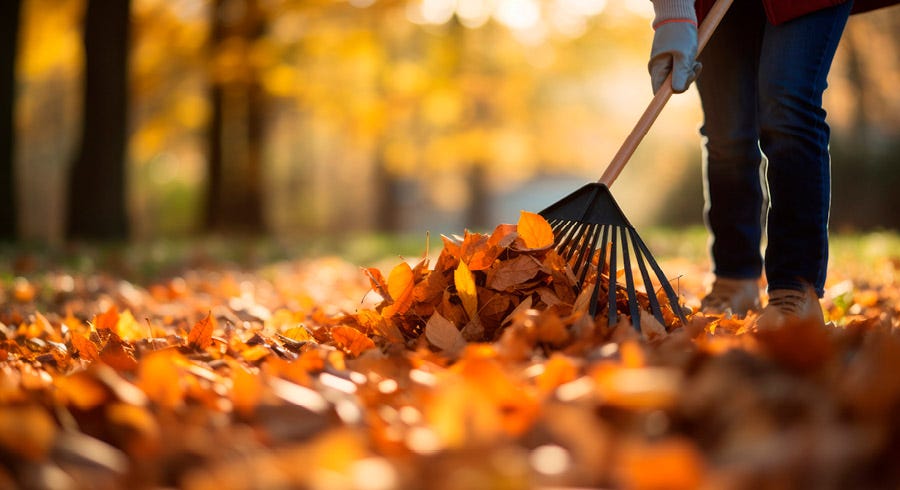How to Make Leaf Mould


Is your garden covered in fallen leaves? Don’t waste them! Now is the perfect time to make a nutrient rich leaf mould mulch for your borders and pots. It’s easy to do and - bar the cost of some bin bags - free to make.
How to Make Leaf Mould: The Easy Way
The good news is that making a good quality mulch isn’t difficult. The hardest part is sweeping up the leaves - but there are lots of ways to make that easier too.
Wondering which leaves you can use? "Most will work well in leaf mould although some, such as oak, beech and hornbeam, will break down more quickly into a great quality mulch," says Robert Dyas 'Garden Guru' Richard Redman. "If you have any pine needles, it’s worth keeping those separate as they will break down into a good ericaceous mulch for acid-loving plants such as rhododendrons, camellias and blueberries. Don’t worry if you sweep up some grass clippings in your leaf mould though - these will add to the nutrient content of the finished mulch."
At its simplest you can just use a good garden rake or broom to collect the fallen leaves but if you have a larger garden - or can’t face all that raking and sweeping - you could make the job a lot easier with a leaf blower or garden vacuum.
Some leaves - such as thicker sycamore and chestnut leaves - will benefit from shredding before you add them to your leaf mould. You can either run over the leaf piles with a lawnmower or invest in a 3-in-1 leaf blower, vacuum and shredder to make light work of it.
If you are collecting up the leaves manually, then leaf grabbers can make this easier and it’s definitely worth wearing some good garden gloves in case any holly, thorns or nettles have been swept up with the leaves.


How to Make a Leaf Mould Bin
Storing the leaves in sturdy bin bags or old garden compost bags works well if you want to keep things simple. Moisen the leaves if they are dry then tie up the sacks and punch in some holes using a garden fork. Then you can just put them out of sight for one to two years until the leaves are fully broken down and ready to use.
Or, if you prefer not to have black sacks hanging around, you can easily construct a leaf mould bin out of old pallets or by attaching chicken wire around garden stakes. Or you can pick up a ready-made compost bin for leaves.
How Long Does it Take to Make Leaf Mould?
Most leaves will take one to two years to decay fully. For a faster mulch you can shred or mow the leaves first which will help them decay quicker.
Be sure to keep the heap moist - watering open heaps during dry spells will speed up the process. Turning the heap regularly should also help speed things up by aerating the leaves.
How to Use Your Leaf Mould
Leaf mould is most commonly used as a top dressing. It can be spread across borders to help suppress weeds, retain moisture and improve the soil. Alternatively it can be dug in to speed up the soil conditioning.
Well-aged leaf mould - of at least 2 years old - can also be used as seed compost. While younger leaf mould of a year or so, can be mixed with normal garden compost and added as a top dressing to pots in spring.
What are the Benefits of Leaf Mould Mulch?
Leaf mould is a free and readily available soil improver. It can increase mycorrhizal fungi in the soil, which helps plants take up nutrients and water and to grow. It also helps suppress weed growth and prevent nutrients washing away.
So don’t waste those garden leaves - mulch them!










